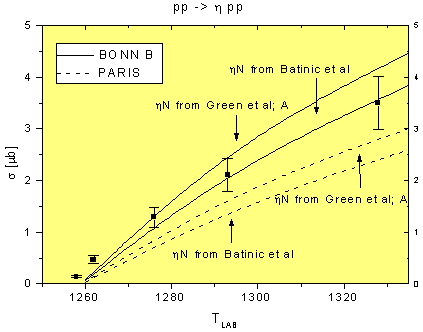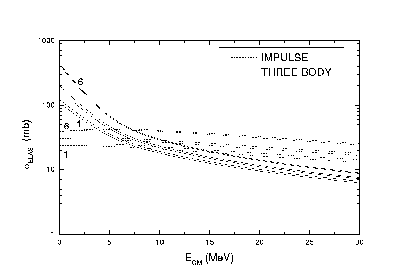| Main topics of my research | |
| Few Body Systems in Nuclear Physics |
| Meson production reactions at threshold | |
| Information on the
short-range nuclear force is gained with experiments measuring meson production
(pi and eta) near the threshold energies, where the colliding nucleons
in the final state become essentially at rest, giving their initial kinetic
energy as exchange of the produced meson mass. The rates of these reactions
are crucially sensitive to the short-range parts of the nuclear forces.
New experiments (Uppsala,
Julich) aim also to obtain additional information by using spin-polarized
beams and to search for heavier mesons production thresholds. They
|
 |
| Three-Nucleon Forces | |
| A three-nucleon force is
an interaction between three particles which is not the sum of pairwise
interactions. An analogy that allows to understand the existence of a
three-nucleon force as a consequence of the structure and extension of the nucleons, is the earth-moon-satellite system: the tides induced by the moon in the oceans on the earth (like a polarization phenomena of a nucleon by another one) alter the interaction between the earth and the satellite, which depends not only on their relative position but also on the position of the moon. Three nucleon forces are
weak but strong efforts exist (TUNL, Nikhef, Indiana) to measure their
effects in scattering experiments of light nuclei, surveying a variety
of
|
|
| Open problems | |
|
 |